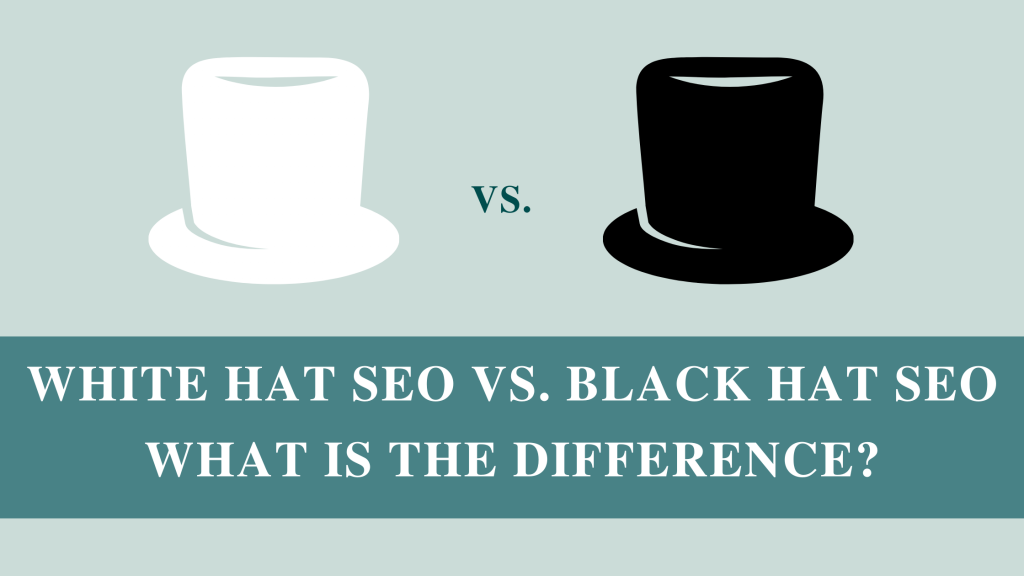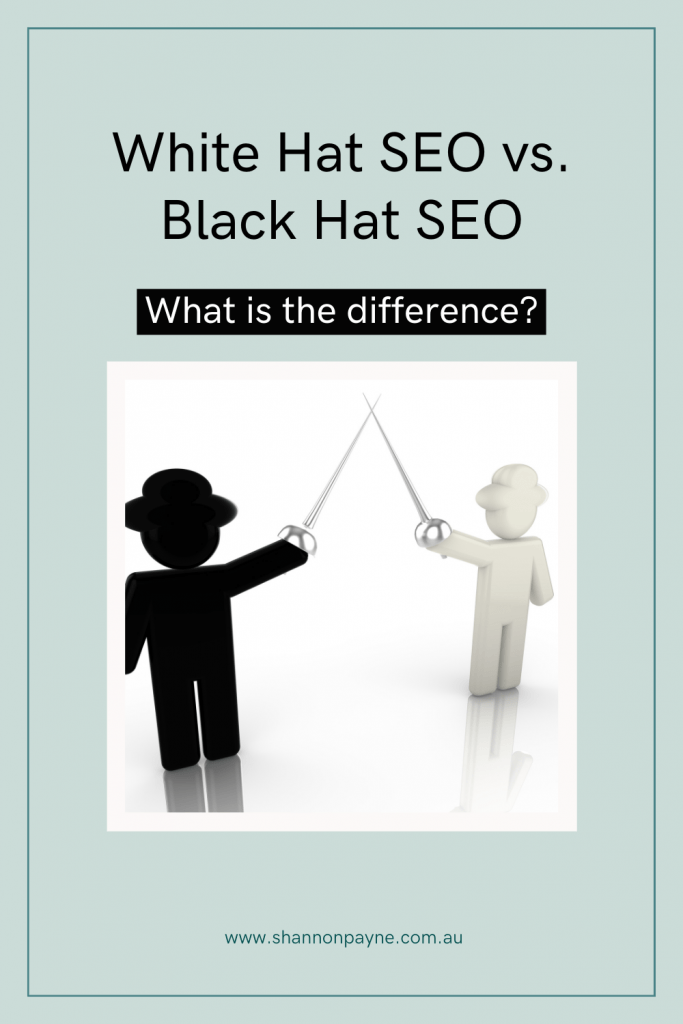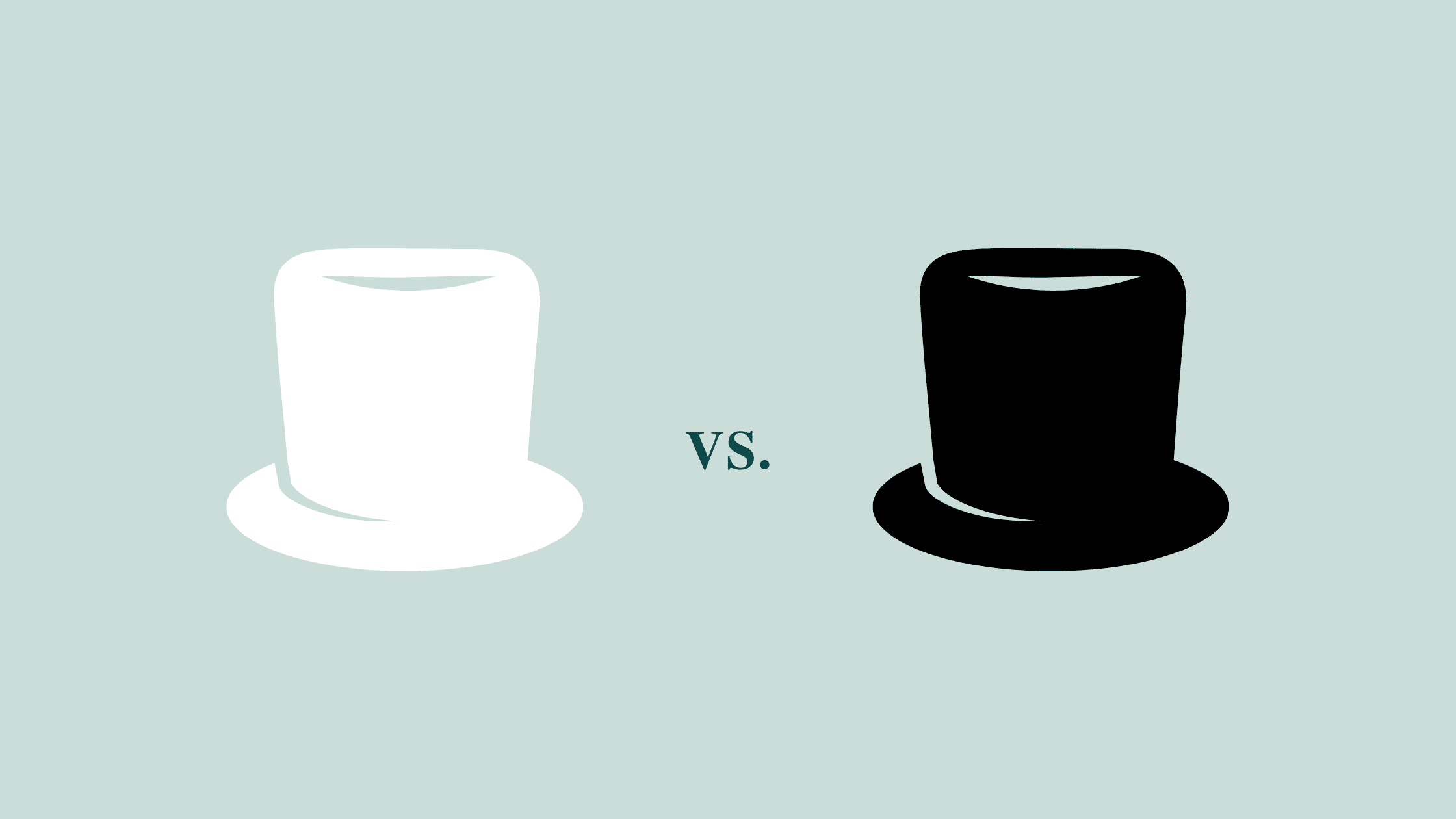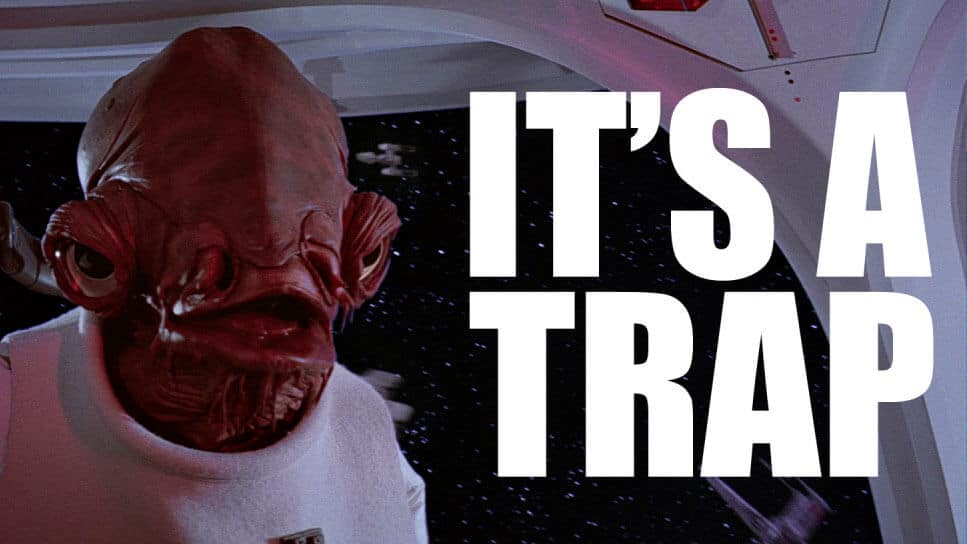
White Hat SEO and Black Hat SEO refers to the techniques used to improve your websites search engine ranking.
You know how in old western films the hero wore the white cowboy hat and the villain would wear the black cowboy hat? Well, it’s the same with Black vs White Hat SEO.
Black Hat SEO = Bad Practice
White Hat SEO = Good Practice
Black Hat SEO can be tempting for some as it is seen as a quick and easy way to climb up the search engine rankings. However the success is often short-lived, search engines are quick to penalise those that try to manipulate them.
SEO is a long game and White Hat SEO acknowledges that.
The best thing you can do for yourself, your business and your website is to know what tactics to implement and what to avoid. Continue reading to find out more and what you can do to improve your search engine ranking and what not to do so you don’t get penalised.
What is White Hat SEO?
White Hat SEO refers to the correct and ethical way to optimise your site for search engine ranking by following search engine guidelines, focusing on the site visitors and users, and taking a long-term approach.
Follows search engine guidelines
Google literally tells you what to do and what not to do, have a read of Google’s Webmaster Guidelines to make sure you’re following the rules!
Focuses on the user
If you are providing useful content for your site visitors, you are likely to get return visitors and referrals. Search engines acknowledge this, by being a source of information you are benefiting your search ranking.
Long-term approach
Ranking higher in search engines doesn’t happen overnight. SEO is a long game, and White Hat SEO acknowledges that. It takes time to build up your website as a reliable source, by implementing best practice every day you will eventually build the authority that gets you one page 1 of search engines.
What is Black Hat SEO?
Black Hat SEO is the opposite of White Hat SEO, it uses manipulative and unethical practices to attempt to rank higher in search engines. It violates search engine guidelines, focuses on search engine crawlers and is about making “quick-wins”.
Violates search engine guidelines
Again, check out Google’s Webmaster Guidelines to avoid Black Hat SEO tactics.
Focuses on the search engine crawlers
The search engine crawlers do not see what the users see and vice versa. They see what is going on in the background, this is where Black Hat SEO techniques come into play which I will cover further below.
Making “quick-wins”
Many people who use Black Hat SEO techniques do not respect that SEO is a long game. They are focusing on how to rank as quickly and as easily as possible, which is not sustainable. It may not always be immediate but search engines do eventually catch up to you and they will penalise you.
White Hat SEO Techniques to Implement
1. Quality content
At the end of the day, this is exactly what search engines are looking for. They want you to provide quality content so that they can reference THEIR site visitors to you! If they are not providing quality content to their users, then those users will not return. It is a domino effect.
2. UX and UI
Build a website that is user friendly and easy to navigate. A site that is well laid out for visitors and takes them to where they need is going to improve bounce rate which is a considered factor for search engine ranking.
3. Mobile-friendliness
Related to user experience, search engines prioritise websites that are mobile friendly. Again they want the best user experience for their visitors. Google has a free Mobile-Friendly Test for you to see if your website is mobile-friendly. For more on responsive design read my blog post here.
4. Site speed
Your site speed signals to search engines that again your site is user-friendly. A slow-loading website is jeopardizing your search engine ranking. To check the speed of your website visit GT Metrix.
5. Proper use of keywords
Do proper keyword research, look for gaps in the market and build your content around those keywords. Don’t keyword stuff when writing your content either, stick to a primary keyword and a few secondary keywords, and make sure your content is legible!
Moz and Ahrefs both have great keyword research tools for you to use.
6. Optimised code
Write lean code and use properly structured code to assist search engines to find what they are looking for. Use proper heading tags so crawlers know what an article is about, use alt tags on your images. If you aren’t sure where to start, enlist the help of a web developer who can ensure your code is fully optimised.
7. Link building
Link building is a way to drive traffic from your website to other relevant sources and vice versa. This can be linking for further reading, linking a related source, linking a relevant document/image/video. It is another way to build your authority, keep in line with White Hat link building and avoid Black Hat practices described below.

Black Hat SEO Techniques to Avoid
1. Keyword Stuffing
Probably the more common technique people use to get their content to rank higher. By repeatedly using keywords you may be getting noticed by search engines but you are making your content unreadable.
Check out Google’s example of keyword stuffing:
We sell custom cigar humidors. Our custom cigar humidors are handmade. If you’re thinking of buying a custom cigar humidor, please contact our custom cigar humidor specialists at [email protected].
If your content has a higher percentage of keywords than actual useful information – you’re keyword stuffing.
2. Hidden Text
Exactly as the name suggests, this is hiding your text and links so that the user can not see it but the search engine is picking up on it and so potentially improving your ranking.
There are a few ways this can be achieved:
- changing the colour of the text to match the page background (i.e. white text on white background).
- linking a bit of punctuation such as a full stop or comma
- making the font size so small it can not be seen
If your user can’t see it – don’t do it.
3. Cloaking
Similar to Hidden Text, Cloaking is when you are showing one thing to your visitors and another to search engines. For example, a visitor looks at your page and sees an image, however, a search engine sees hidden text and links coded into the page.
4. Duplicate content
You visit another website that is ranking well, you like their content, you copy it and publish it on your website. We learnt in school that plagiarism is bad – don’t forget that. Search engines won’t look at your site and think “oh wow this is great information”, instead they will think “hmm I’ve seen this somewhere else, this is not useful this is just duplicate content”. Don’t do it.
5. Doorways
Doorway pages are of little use to visitors but are used to funnel visitors to the final destination. Generally, they are keyword rich and can appear useful to search engine crawlers which can temporarily increase your search ranking. However once a search engine discovers it you will be penalised and don’t think you’re safe if you’re a big company either, in 2006 Google penalised BMW for using doorways!
6. Comment Spam
How annoying are spam comments? Most people who have a blog will get spam comments at some point, and you will notice most of them have links. This is a Black Hat technique to build more backlinks to their website. It’s not cool, it’s annoying, and search engines will not like you for it.
These are but a few Black Hat SEO techniques you need to avoid to make sure you are not at risk of experiencing the wrath of Google or any other search engine.
For a full list of Black Hat SEO techniques to AVOID check out the guidelines given by the masters themselves at Google.

Penalties for using Black Hat SEO
With all this talk about how bad Black Hat SEO is, there have to be some consequences for using these techniques.
For starters, search engines will update their algorithm so the techniques you have been using will no longer be effective. Your “quick-wins” have become “quick-loses”.
Examples of this are:
Hummingbird: targeted exact-match keyword targeting and keyword stuffing
Panda: targeted low quality, thin content and spammy websites
Fred: low-value and affiliate heavy content
For more examples read this article here.
These are general updates, however, if you really p*ss off Google you can get handed a manual action that means a real human has looked at your website and said NOPE. This can blacklist a web page or an entire website and you can lose your domain authority. To fix this you need to read the manual action report, fix the issues that have been described and then request a review.
But I bet you want me to name names, don’t you!
Asides from BMW that was mentioned above, here are some other companies that have suffered the wrath of Google!
JC Penney – JC Penney had a paid link strategy to rank better on Google search results. At the time every trending product you searched for you were supposed to see their website at the top. Google penalised them and their website ranking dropped to almost the hundredth position in the search results.
Gourmet Gift Baskets – after outsourcing their SEO, the owner woke up one day to find their site had disappeared from Google. It was discovered that one of the companies managing their SEO had been buying links and as a result, they were hit with a penalty right before the holiday season which ended up costing them almost USD 4 million!
Mozilla – Mozilla was penalised for hosting a webpage that had more than 21k spam comments! Although this wasn’t their fault, it serves a lesson to everyone with a website the importance of managing spam comments. The page lost some of its rankings, however, Mozilla ended up completely removing the page.
Google doesn’t just punish others, they have also penalised themselves FIVE times!
It goes to show it doesn’t matter who you are, how big your company is, Black Hat SEO tactics are to be avoided! You may experience quick-wins and a short time at the top, but search engines will catch up to you and the results can be devastating.
Need help with your SEO? Check out my SEO audits or head to my contact page and get in touch!
Subscribe!
Save for later!



